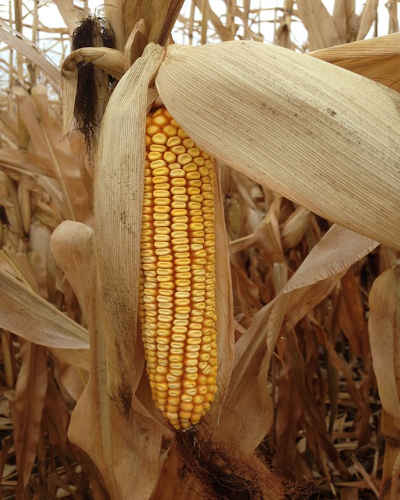By Greg Endres
During the 2020 Advanced Crop Advisers Workshop, two regional corn specialists shared information on late-season corn seed development and response to the 2019 environment. The following are selected notes, primarily from Joel Ransom, NDSU Extension agronomist and Emerson Nafziger, University of Illinois.
- ND corn grain yield has annually increased an average of about 0.75 bushel per acre from 1980 through 2019.
- Corn growing degree day units (GDDU): This system was arrived at by collecting a lot of temperature and crop stage data; it’s not “theoretical”. 50 degrees F as the base temperature implies no growth or photosynthesis (PS) below 50 degrees. 86 degrees F as the high temperature “cutoff” implies that growth or PS rates above that are the same as at 86 degrees F. Corn PS increases with temperature, up to maybe 100 degrees; the cutoff is because factors like drought (and maybe night temperatures) often restrict plant development in the field.
- The grain development period (R1-R6 growth stages) averages 50 to 60 days, but “real fill” period is during about 30 days, primarily during dent (R5 stage). During dent, sugars pour into the kernels, where they are converted into starch, and the starch begins to “pack” into endosperm cells. A starch line (packed starch at the crown, less and “looser” starch below) appears early, starting at the top of the kernel and proceeding down to the cob. More than half of kernel dry weight is deposited during the dent stage.

Mature, dry corn ready to be combined.
- About 190 GDDU are required for corn at the half-milk stage to reach physiological maturity (R6 stage). If the plant is killed by frost at the half-milk stage, 10- to 12-percent grain yield loss is expected.
- R6 stage is reached after the milk line disappears and the starch has reached the base of the kernel. At this point, the kernels have reached maximum dry matter accumulation. Black layer (death of placental cells block movement of photosynthates from vegetative parts of plant to kernel) occurs after physiological maturity and serves as a visual verification that the plant is mature. Black layer typically occurs at 30% moisture but varies by hybrid and environment. However, black layer can form whenever sugar supply to the developing kernel falls below a threshold. Factors that can stop this sugar flow (besides plant maturity): leaf loss due to hail, frost, and disease; or periods of very cool temperatures (e.g. less than 55 degrees for a week) during grain fill.
- If sugar movement into kernel stops before maturity (R6 stage): Kernel weight and yield will be lowered, but not by much if GDDU totals are within 200 or so of maturity (~90% of total). Grain moisture will be high. Sugars often remain in the base of kernel not converted to starch; this will slow drying (more solubles means water is “held” more tightly). With less starch present, the base of the kernel will shrink as it dries. Lower endosperm density and kernels whose shape doesn’t allow them to fit together as well means lower test weight, even after grain is dried.
- What do we learn from test weight (TW)? TW is an (inexact) indicator of how well the grainfilling process has gone, including the sugar supply, kernel diseases, and weather during the process. If grainfill has been complete or nearly complete, then low TW measured on wet grain will rebound as grain is dried. Low TW means more volume to handle. TW is partly used in marketing as a proxy for “low-quality” (low starch density, unfilled kernels) grain. But TW is not a reliable indicator of the value of the grain as feed: crude protein can be higher in unfilled kernels.
- Estimated field drying as percentage point per month: Nov=4-5; Dec=2; Jan=2; Feb=3; Mar=5; Apr=16. A corn drydown calculator is available from Iowa State University that offers predictions of corn drydown in the field. The electronic tool can help plan logistics and assess risk by estimating the changes in grain moisture that are likely to occur under a set of field conditions. Website: https://crops.extension.iastate.edu/facts/corn-drydown-calculator.
Source : ndsu.edu